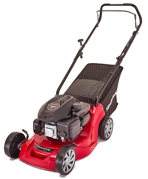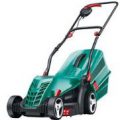If you need some help with fixing your Lawn Mower Carburettor, then take a look at the video outlined below which will help you get this particular job done…
Lawnmower carburettors are essential components in small engines that help regulate the mixture of fuel and air to facilitate combustion. These devices play a crucial role in the efficient functioning of lawnmowers and other similar equipment.
Combustion
Carburettors work by drawing fuel from the tank and mixing it with air in the right proportions. The resulting mixture is then sent to the engine for combustion. A lawnmower carburettor typically consists of several key parts, including a fuel bowl, float, needle valve, throttle plate, and air intake.
View also: Popular Petrol Lawnmowers
Fuel Bowl
The fuel bowl stores the gasoline or petrol, while the float and needle valve work together to regulate the fuel level. As fuel enters the bowl, the float rises and the needle valve opens, allowing fuel to enter until the desired level is reached.
The throttle plate controls the amount of air entering the carburettor, affecting the engine's speed and power output. The air intake is responsible for drawing in fresh air to mix with the fuel.
Carburettor Tips
Video - How to Fix a Lawn Mower Carburettor
Wear and Tear
Over time, lawnmower carburettors can become clogged or suffer from wear and tear, leading to issues such as poor engine performance, difficulty starting, or stalling. Regular maintenance, including cleaning and adjusting the carburettor, can help prevent such problems and ensure optimal engine operation.
Components
When troubleshooting carburettor issues, it's important to inspect and clean the various components thoroughly. Clogged jets, passages, or a dirty fuel bowl can hinder fuel flow and disrupt the air-fuel mixture. Using carburettor cleaner or a dedicated cleaning solution can effectively remove debris and deposits.
Settings
Additionally, adjusting the carburettor settings may be necessary to achieve the right fuel-air mixture. This adjustment can involve tweaking the idle speed, mixture screws, or throttle linkage to optimize performance and fuel efficiency.
View also: Popular Cordless Lawnmowers
Fuel Injection Systems
However, it's worth noting that modern lawnmowers and small engines are increasingly utilizing fuel injection systems instead of carburettors. Fuel injection offers better fuel efficiency, precise fuel metering, and improved performance compared to carburettors.
Nonetheless, understanding the basics of carburettor operation and maintenance remains valuable knowledge for those using older lawnmower models or other small engine equipment.
Types of Lawnmower Carburettors
There are primarily two types of carburettors commonly used in lawnmowers: diaphragm carburettors and float carburettors.
Diaphragm Carburettors
Diaphragm carburettors are popular in small engines, including lawnmowers, due to their simplicity and reliability. They utilize a rubber or synthetic diaphragm to regulate fuel flow. The diaphragm acts as a fuel pump and vacuum source, controlling the movement of fuel and air within the carburettor.
Diaphragm carburettors have fewer moving parts compared to float carburettors, making them less prone to damage or wear. They are also more resistant to fuel contamination, as the diaphragm acts as a barrier between the fuel and other internal components. Diaphragm carburettors are commonly used in two-stroke engines but can also be found in some four-stroke lawnmower engines.
Float Carburettors
Float carburettors, also known as gravity-feed carburettors, operate based on the principle of a float chamber and a float valve. These carburettors have a float that rises and falls with the fuel level in the float chamber, controlling the flow of fuel into the carburettor.
When the fuel level in the float chamber drops, the float descends and opens the float valve, allowing fuel to enter and maintain the desired level. The float valve then closes when the fuel reaches the appropriate height, preventing further fuel flow.
Four Stroke Engines
Float carburettors are commonly used in four-stroke lawnmower engines. They offer precise control over fuel delivery and can handle varying fuel demands effectively. However, they may require more frequent maintenance due to the presence of a float and needle valve, which can be susceptible to wear and contamination.
View also: Popular Ride on Tractor Mowers
How to Repair a Lawnmower Carburettor
Repairing and fixing a lawnmower carburettor can help restore proper engine performance and resolve issues such as poor starting, rough idling, or stalling so here are some steps to guide you through the process of fixing this problem
Safety Precautions
Before working on the lawnmower carburettor, ensure that the engine is turned off and the spark plug wire is disconnected to prevent accidental starts. Additionally, work in a well-ventilated area away from open flames or sparks due to the flammability of gasoline.
Cleaning the Carburettor
Start by removing the carburettor from the lawnmower. Disassemble it carefully, noting the position of each component. Clean the carburettor thoroughly using a carburettor cleaner or a dedicated cleaning solution. Pay special attention to the jets, passages, and the fuel bowl, as these areas are prone to clogging. Use a small wire or a carburettor cleaning brush to remove any debris or varnish build-up.
Inspecting and Replacing Parts
Inspect the various carburettor components for damage or wear. Check the diaphragm or float, needle valve, gaskets, and seals for any signs of deterioration. Replace any worn or damaged parts with new ones to ensure proper functioning. It's advisable to use a carburettor rebuild kit that contains all the necessary components.
Adjusting Settings
Check the carburettor settings, such as the idle speed and mixture screws, as improper settings can affect engine performance. Consult the lawnmower's manual or the manufacturer's guidelines for the correct settings. Adjust the screws as needed to achieve the proper fuel-air mixture and idle speed.
Reassembling and Installation
Once all the cleaning, inspection, and part replacement are complete, carefully reassemble the carburettor in the reverse order of disassembly. Ensure that all components are correctly aligned and tightened to avoid leaks or malfunctions. Reinstall the carburettor onto the lawnmower engine, following the manufacturer's instructions.
Final Checks
Double-check all connections and make sure the fuel lines are securely attached. Reconnect the spark plug wire and ensure that all other components, such as air filters, are properly installed. Inspect the fuel tank for any debris or contaminants and clean or replace it if necessary.
Testing and Fine-Tuning
Start the lawnmower and let it run for a few minutes to check if the carburettor repairs were successful. Observe the engine's performance, including idling, acceleration, and overall operation. Fine-tune the carburettor settings if required to achieve optimal performance. If you are unsure about any aspect of the carburettor repair process, it's recommended to consult a professional instead.
View also: Popular Weed killers here
Community Feedback
Have you any suggestions or tips yourself when it comes to Lawnmowers carburettors? If so, please educate the wider community by leaving a comment in the comment box section provided below – so that others can learn also…





Recent Comments